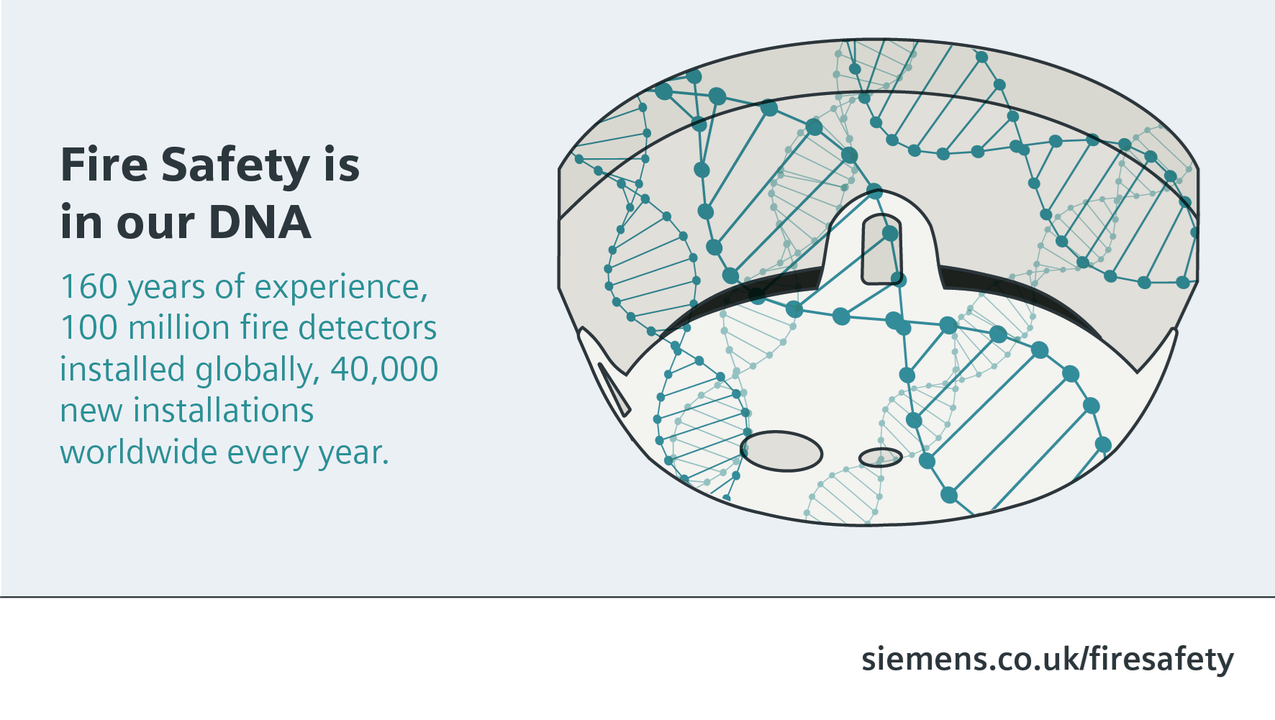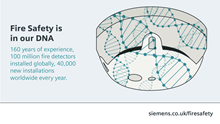- Conventional sensor devices don’t detect false fire triggers accurately
- 90%+ false alarms make it impossible for emergency services to attend every automatically reported incident
- Qualifying whether an alarm is genuine takes precious time – if there is a fire this time can make a critical difference to the outcome
- Intelligent and multi-sensor detection devices are now available for little additional cost
- The FPA tested Siemens intelligent devices and found they had substantially better false alarm immunity
- The ABI will use the report’s evidence to communicate about the better detection technology that’s now accessible and to lobby for change in building regulations
False alarms are overwhelming fire response services
The Association of British Insurers (ABI) has released a report into the level of false and unwanted alarm signals from automatic systems. Over 95% of automatically generated alarms received by the fire and rescue services are false.
Many false alarms are caused by stimuli that sensors misinterpret. For example, in domestic or public settings, steam from a shower or kettle and smoke from cigarettes, or in a commercial setting, smoke and sparks from a welding operation.
With limited resources, emergency services often have to try and validate the alarm before attending an incident. The high incidence of false automatic fire alarms can mean building owners and occupants - understandably - don’t take them seriously.
In the 5% of genuine alarms, the delays this causes can make the difference between controlling a fire and limiting its impact, or having it spread uncontrollably, putting lives at risk and causing catastrophic damage to buildings.
Newer detection devices: are they better?
Since building regulations and EU standards were devised for automatic fire detection alarms, technology has moved on. There are now more sophisticated intelligent and multi-sensor devices that can more accurately alert on incidents that demand evacuation and/or an emergency response.
The ABI commissioned the Fire Protection Association (FPA) to test some of these devices.
The FPA’s alarm immunity test: comparative system performance
The FPA conducted tests in a dedicated smoke detector demonstration facility at the Fire Service College in Moreton in Marsh. It’s an enclosed compartment with controllable ventilation, a control system to remotely activate test equipment and a computer that logs performance and results.
The detectors tested were all Siemens models. There were two traditional smoke detectors and two intelligent devices
- conventional ionization smoke detector
- conventional, single-sensor, optical smoke detector (forward scatter)
- intelligent single-sensor optical fire detector (forward scatter)
- intelligent multi-sensor optical fire detector (forward & backward scatter plus heat)
For the two intelligent devices, each was tested with their detection algorithm optimised for three different environments:
- Clear - sensitive/fast response in clean environments (e.g. offices, sleeping accommodation)
- Moderate - medium response, suitable for everyday environments
- Harsh – targeted response, where immunity to false alarms is critical (e.g. industrial workshops or where detection is linked to a suppression system)
The stimuli tested were welding, steam from a kettle, toasting bread, smouldering wood, burning heptane and welding that ignited heptane.
The report found that the intelligent devices were more discerning and slower to react to false stimuli such as steam or smoking toast, without compromising the speed of reaction to real fire threats.
FPA conclusions and actions
These simple demonstrations show clearly the potential benefits of using intelligent detectors fitted with multiple sensing units. They also illustrate that it is important for the configurations used to be carefully tailored to the environment… to ensure both immunity to false alarms as well as a rapid response to real fire threats…
These results will be forwarded to the British Standards Institute (BSI) and to the Building Research Establishment (BRE) to complement work they have recently undertaken on behalf of the BRE Trust and the Fire Industry Association (FIA). They should assist in the early publication of revised standards incorporating immunity tests for false and unwanted alarms.
More accurate automatic fire detection is possible and affordable now
The ABI intends to use the report to lobby for change in building control regulations. While these only affect new builds, the report highlights that multi-sensor detectors can also replace single-sensor detectors in existing systems. They cost little more than single-sensor detectors and it’s easy to re-programme control panels to deploy them. Commercial property owners and landlords could install them today, to better protect users of their buildings.
With over 160 years of experience in fire protection, 100 million detectors installed around the world and 40,000 new installations every year, the team at Siemens Building Technologies is determined to keep innovating and improving our detectors and systems. Our intelligent and multi-sensor devices can offer more protection to people and buildings and more accurate responses to fire stimuli in a range of settings, so the emergency services can focus resources effectively.
We’re committed to making Siemens devices accessible and easy for building owners, specifiers, landlords and builders to choose for retro-fit or to install in new buildings. Our specialist fire protection division will continue to research and evolve this technology and get it onto the general market rapidly and affordably, for the benefit of building users and owners.
Read the full ABI report here: https://www.abi.org.uk/globalassets/files/publications/public/property/2018/07/abi-fpa-detection-demonstration-report-2018.pdf
To find out more about the Siemens fire safety offering, please visit us here


